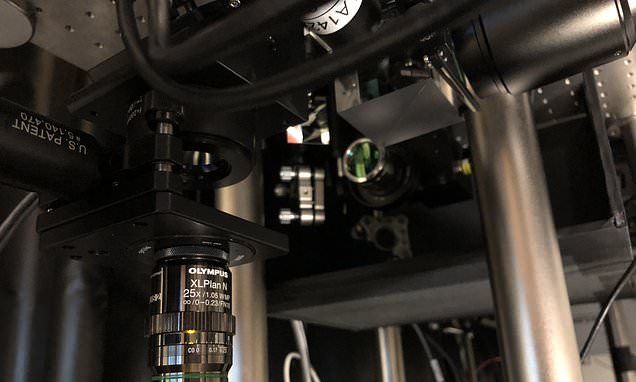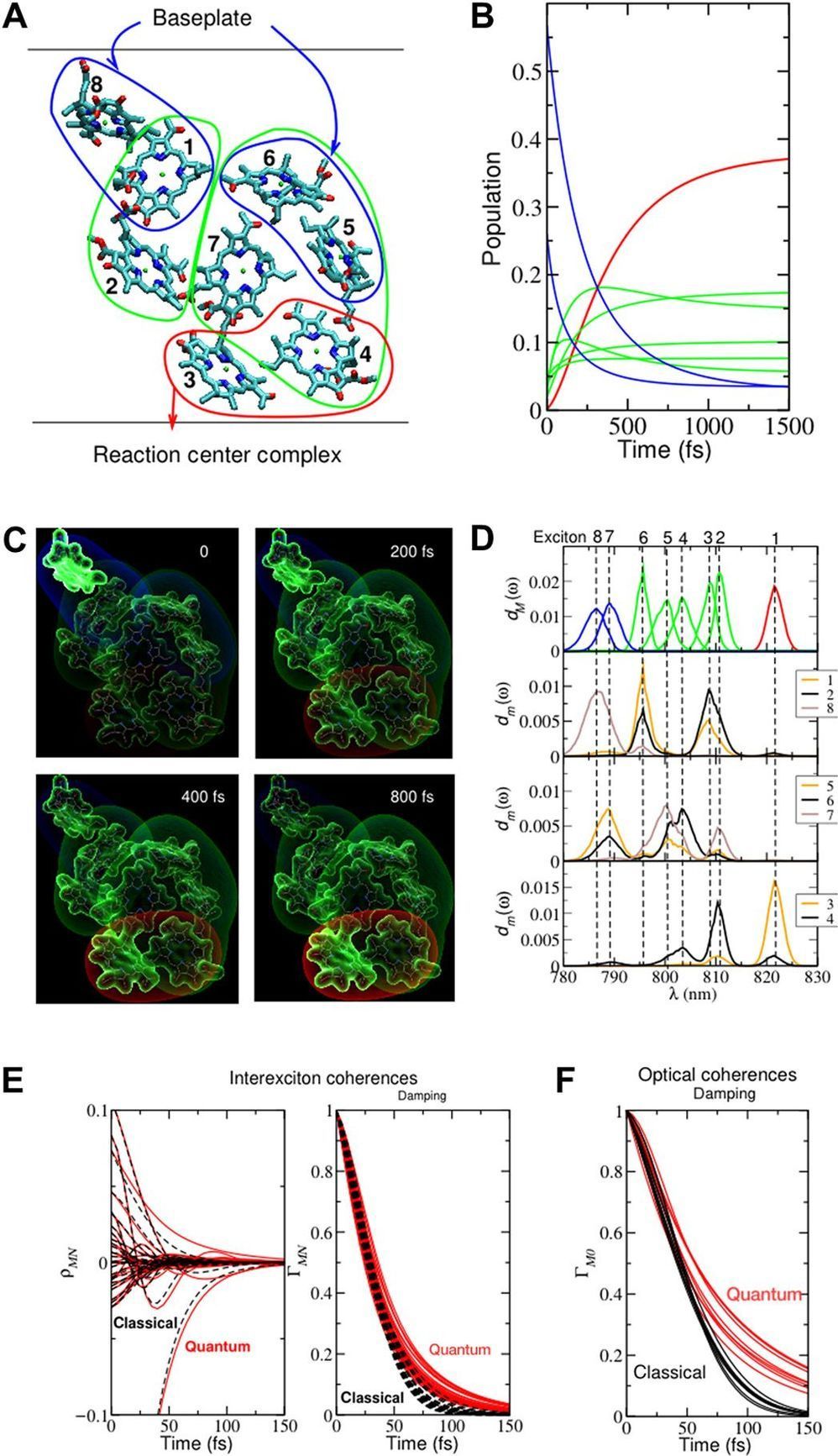Programme covers conflict resolution, mood management and self-assessment for stress.
Covid-19 hits the old hardest, but young people are dying too. Scientists say it may be down to genes or ‘viral load’.
Could used for anything to reduce size just like an ant man suit :3.
Scientists can put all kinds of useful materials in the polymer before they shrink it such as metals, quantum dots and DNA. Pictured is the machine used to shrink objects.
The polyacrylate forms the scaffold over which other materials can be attached.
It is then bathed in a solution that contains molecules of fluorescein, which attach to the scaffold when they are activated by laser light.
:00000
In novel concepts of magnetic data storage, it is intended to send small magnetic bits back and forth in a chip structure, store them densely packed and read them out later. The magnetic stray field generates problems when trying to generate particularly tiny bits. Now, researchers at the Max Born Institute (MBI), the Massachusetts Institute of Technology (MIT) and DESY were able to put an “invisibility cloak” over the magnetic structures. In this fashion, the magnetic stray field can be reduced in a fashion allowing for small yet mobile bits. The results were published in Nature Nanotechnology.
For physicists, magnetism is intimately coupled to rotating motion of electrons in atoms. Orbiting around the atomic nucleus as well as around their own axis, electrons generate the magnetic moment of the atom. The magnetic stray field associated with that magnetic moment is the property we know from e.g. a bar magnet we use to fix notes on pinboard. It is also the magnetic stray field that is used to read the information from a magnetic hard disk drive. In today’s hard disks, a single magnetic bit has a size of about 15 × 45 nanometer, about 1,000,000,000,000 of those would fit on a stamp.
One vision for a novel concept to store data magnetically is to send the magnetic bits back and forth in a memory chip via current pulses, in order to store them at a suitable place in the chip and retrieve them later. Here, the magnetic stray field is a bit of a curse, as it prevents that the bits can be made smaller for even denser packing of the information. On the other hand, the magnetic moment underlying the stray field is required to be able to move the structures around.
This could lead to biological teleportation. :3.
Photosynthesis is a highly optimized process from which valuable lessons can be learned about the operating principles in nature. Its primary steps involve energy transport operating near theoretical quantum limits in efficiency. Recently, extensive research was motivated by the hypothesis that nature used quantum coherences to direct energy transfer. This body of work, a cornerstone for the field of quantum biology, rests on the interpretation of small-amplitude oscillations in two-dimensional electronic spectra of photosynthetic complexes. This Review discusses recent work reexamining these claims and demonstrates that interexciton coherences are too short lived to have any functional significance in photosynthetic energy transfer. Instead, the observed long-lived coherences originate from impulsively excited vibrations, generally observed in femtosecond spectroscopy. These efforts, collectively, lead to a more detailed understanding of the quantum aspects of dissipation. Nature, rather than trying to avoid dissipation, exploits it via engineering of exciton-bath interaction to create efficient energy flow.
Over the past decade, the field of quantum biology has seen an enormous increase in activity, with detailed studies of phenomena ranging from the primary processes in vision and photosynthesis to avian navigation (1, 2). In principle, the study of quantum effects in complex biological systems has a history stretching back to the early years of quantum mechanics (3); however, only recently has it truly taken center stage as a scientifically testable concept. While the overall discussion has wide-ranging ramifications, for the purposes of this Review, we will focus on the subfield where the debate is most amenable to direct experimental tests of purported quantum effects—photosynthetic light harvesting.
In femtosecond multidimensional spectroscopy of several pigment-protein complexes (PPCs), we find what has been widely considered the experimental signature of nontrivial quantum effects in light harvesting: oscillatory signals—the spectroscopic characteristic of “quantum coherence.” These signals, or rather their interpretation with the associated claims of a direct link to the system’s “quantumness” (4), have drawn enormous attention, much of it from scientists outside the immediate community of photosynthetic light harvesting (5). While significant efforts have been spent on interpreting these weak signals, the overall debate has raised important questions of a general nature (6). What is uniquely “quantum” in biology? What “nontrivial quantum effects” can be considered as the origin of observable biological phenomena?
A drug used to treat HIV and cancer patients has shown success in treating some of the most severe coronavirus patients and was just cleared by the U.S. Food and Drug Administration to start a phase two clinical trial. Much of the work behind the drug is happening in Washington state.
ENDING SMOKING In This Generation
Posted in biotech/medical, economics, food, law, life extension, policy
Dr. Derek Yach, Founder, President, and Board Member of The Foundation for a Smoke-Free World (FSFW), joined me on ideaXme (http://radioideaxme.com/) to discuss his group’s work in the core areas of Agriculture and Livelihoods, Industry Transformation, and Health, Science, and Technology (Disclosure — FSFW is funded ~$US1 Billion by Philip Morris International, but take a listen to full story…) — #Ideaxme #Smoking #Vaping #Tobacco #Cessation #AlternativeUses #HarmReduction #WHO #CDC #Health #Wellness #Longevity #Biotechnology #LifeExtension #Aging #IraPastor #Bioquark #Regenerage World Health Organization (WHO) CDC CDC Global United Nations Philip Morris International.
Ira Pastor, ideaXme life sciences ambassador and founder of Bioquark, interviews Dr. Derek Yach, founder, president, and board member of The Foundation for a Smoke-Free World, and passionate advocate for health promotion and disease prevention. Dr Yach’s objective is to end smoking in this generation. We investigated to see how that might be achieved.
Disclosure: The Foundation for a Smoke-Free World has received its initial funding pledge of $80 million USD annually for 12 years, beginning in 2018 from Philip Morris International (PMI) — The Foundation has a nonprofit status as a US 501c3 organization, and by law and policy must operate completely independently from PMI, and cannot engage in activities designed to support PMI’s interests. Further, PMI can have no involvement or say in their work.
Mathematicians from the California Institute of Technology have solved an old problem related to a mathematical process called a random walk.
The team, which also worked with a colleague from Israel’s Ben-Gurion University, solved the problem in a rush after having a realization one evening. Lead author Omer Tamuz studies both economics and mathematics, using probability theory and ergodic theory as the link—a progressive and blended approach that this year’s Abel Prize-winning mathematicians helped to trailblaze.







